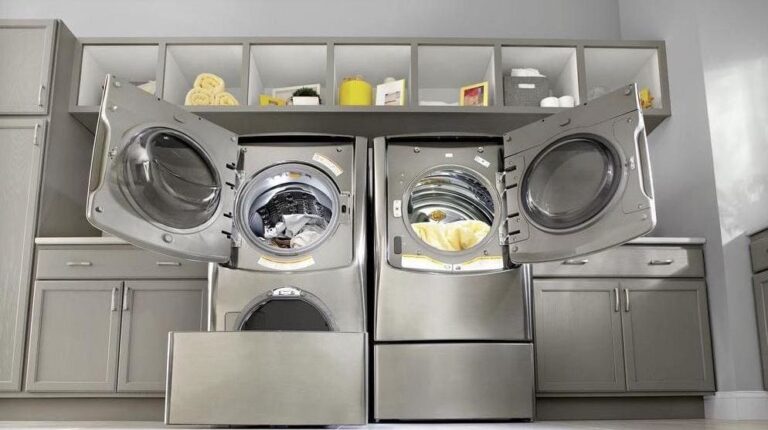Water-Saving Appliances for Eco-Conscious Buyers: Make a Sustainable Choice for Your Home
As the world becomes increasingly aware of the importance of environmental sustainability, more homeowners are looking for ways to reduce their water consumption. Water-saving appliances offer an effective way to cut down on water usage without sacrificing performance, making them an ideal choice for eco-conscious buyers. These innovative appliances not only help conserve one of our most precious resources but also lower utility bills, creating a win-win situation for your wallet and the planet. In this guide, we’ll explore the best water-saving appliances available and how they can make a positive impact on your home and the environment.
Energy-Efficient Dishwashers: Save Water While Cleaning Dishes
Dishwashers are one of the biggest culprits when it comes to water consumption in the home. However, modern energy-efficient dishwashers are designed to use significantly less water than older models while still providing excellent cleaning results. Many of these models are WaterSense certified, meaning they meet the U.S. Environmental Protection Agency’s (EPA) water efficiency standards. Appliances like the Bosch 300 Series and Whirlpool WDT710PAKZ feature sensors that adjust water usage based on load size and soil levels, ensuring minimal water use without compromising cleanliness. By choosing an energy-efficient dishwasher, you can significantly reduce water waste while keeping your dishes sparkling clean.
Low-Flow Faucets and Showerheads: Simple Upgrades for Big Savings
One of the easiest ways to save water in your home is by installing low-flow faucets and showerheads. These appliances are designed to reduce water flow without sacrificing performance. Low-flow fixtures can reduce water usage by as much as 30% to 50%, making them one of the simplest and most effective water-saving solutions. The Moen WaterSense Certified Faucets and Delta Lahara Showerhead are excellent choices that maintain strong water pressure while using less water. Installing these water-saving fixtures throughout your home can make a significant impact on your overall water consumption, helping you conserve more and spend less.
Water-Saving Washing Machines: Clean Clothes with Less Water
Washing machines consume a large amount of water, particularly older models that use excessive amounts for each load. However, high-efficiency washing machines (HE washers) are specifically designed to reduce water usage while still providing top-notch cleaning results. Machines like the LG WM3700HWA and Samsung WF45K6500AV use advanced technology to sense the load size and soil levels, adjusting the water level accordingly. These water-saving washers use up to 50% less water than traditional models, which not only helps conserve water but also reduces energy usage by shortening drying times. For eco-conscious buyers, upgrading to a high-efficiency washing machine is a smart investment that saves water and energy.
Smart Irrigation Systems: Efficient Lawn and Garden Care
For those who enjoy maintaining a lush lawn or vibrant garden, smart irrigation systems can make a significant difference in water conservation. These systems use weather data and moisture sensors to automatically adjust watering schedules based on your garden’s needs, ensuring that water is used only when necessary. Brands like Rachio 3 and RainMachine offer Wi-Fi-enabled smart irrigation controllers that allow you to monitor and adjust watering settings remotely via an app. These systems prevent overwatering, reduce water waste, and keep your landscape healthy with minimal effort, making them an ideal solution for eco-conscious gardeners.
Water-Saving Toilets: Reduce Water Use in the Bathroom
Toilets are one of the largest water users in the home, accounting for a significant portion of household water consumption. Water-saving toilets, also known as low-flow toilets, use significantly less water per flush compared to older models. Modern toilets like the TOTO Drake II and Kohler Wellworth use 1.28 gallons per flush (GPF), which is much more water-efficient than traditional toilets that can use up to 3.5 GPF. Many of these toilets are designed with dual-flush systems, allowing users to choose between a lower flush for liquid waste and a higher flush for solid waste, further conserving water. Installing a water-saving toilet is a great way to reduce your household’s water consumption and lower your utility bills.
FAQs
1. How much water can I save with a water-efficient dishwasher? Modern energy-efficient dishwashers can use up to 50% less water compared to older models. For example, an Energy Star-rated dishwasher can save up to 3,870 gallons of water per year for a family of four.
2. Are low-flow faucets and showerheads effective? Yes, low-flow faucets and showerheads are designed to maintain high water pressure while using significantly less water. These fixtures can reduce water consumption by up to 50% without compromising performance.
3. What is the difference between a high-efficiency washing machine and a regular washing machine? High-efficiency (HE) washing machines use advanced technology to automatically adjust water levels based on load size, using significantly less water than traditional washing machines, often reducing water consumption by up to 50%.
4. Can smart irrigation systems really save water? Yes, smart irrigation systems are highly effective at saving water. By using weather data and soil moisture sensors, these systems only water when necessary, ensuring your lawn or garden gets the right amount of water without wasting any.
5. How much water can a low-flow toilet save? A low-flow toilet uses about 1.28 gallons per flush, compared to older toilets that can use up to 3.5 gallons per flush. By switching to a water-saving toilet, you can save thousands of gallons of water per year.

